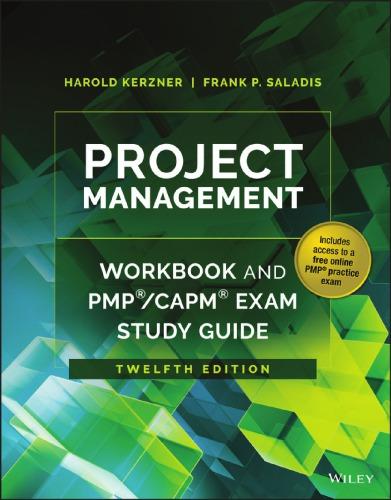A customer (homeowner) hires a contractor to tile five identical rooms in his home. The customer purchased
Question:
A customer (homeowner) hires a contractor to tile five identical rooms in his home.
The customer purchased the tiles and the contractor will be reimbursed for labor only. Because the tiles are difficult to work with, the contractor assumes two days per room at eight hours per day and at $100 per hour. The planned cost is $8,000 but overtime will also be paid, if necessary, at the same rate of $100 per hour.
The first room was completed in three days because of difficulty in workmanship and getting an understanding of how to use these special tiles. This included two hours of overtime. The second room was completed in two days. Using EVMS, the following information would be presented to the homeowner at the end of the first week:
PV = 5 × 800 = $4,000 EV = 4 × 800 = $3,200 AC = 42 × 100 = $4,200 BAC = $8,000 SV = EV – PV = –$800 CV = EV – AC = –$1,000 EAC = (AC/EV) × BAC = $10,500 VAC = BAC – EAC = –$2,500 ETC = EAC – BAC = $6,300 Percent complete = EV/BAC = 40%
SPI = EV/PV = 0.8 CPI = EV/AC = 0.76 Now it is your turn. Having tiled the floors, you now hire a contractor to wallpaper all of the walls in each of the five rooms. Once again, you purchase the wallpaper and will reimburse the contractor just for labor. The contractor works at
$100 per hour and estimates eight hours of work per room, for a total of five days.
At the end of the first week, working eight hours per day, the contractor completed only three rooms. The EVMS status is:
a. PV =
b. EV =
c. AC =
d. BAC =
e. SV =
f. CV = g. EAC = h. VAC = i. ETC = j. Percent complete = k. SPI = l. CPI =
Step by Step Answer:

Project Management Workbook And PMP/CAPM Exam Study Guide
ISBN: 9781119169109
12th Edition
Authors: Harold R. Kerzner , Frank P. Saladis






